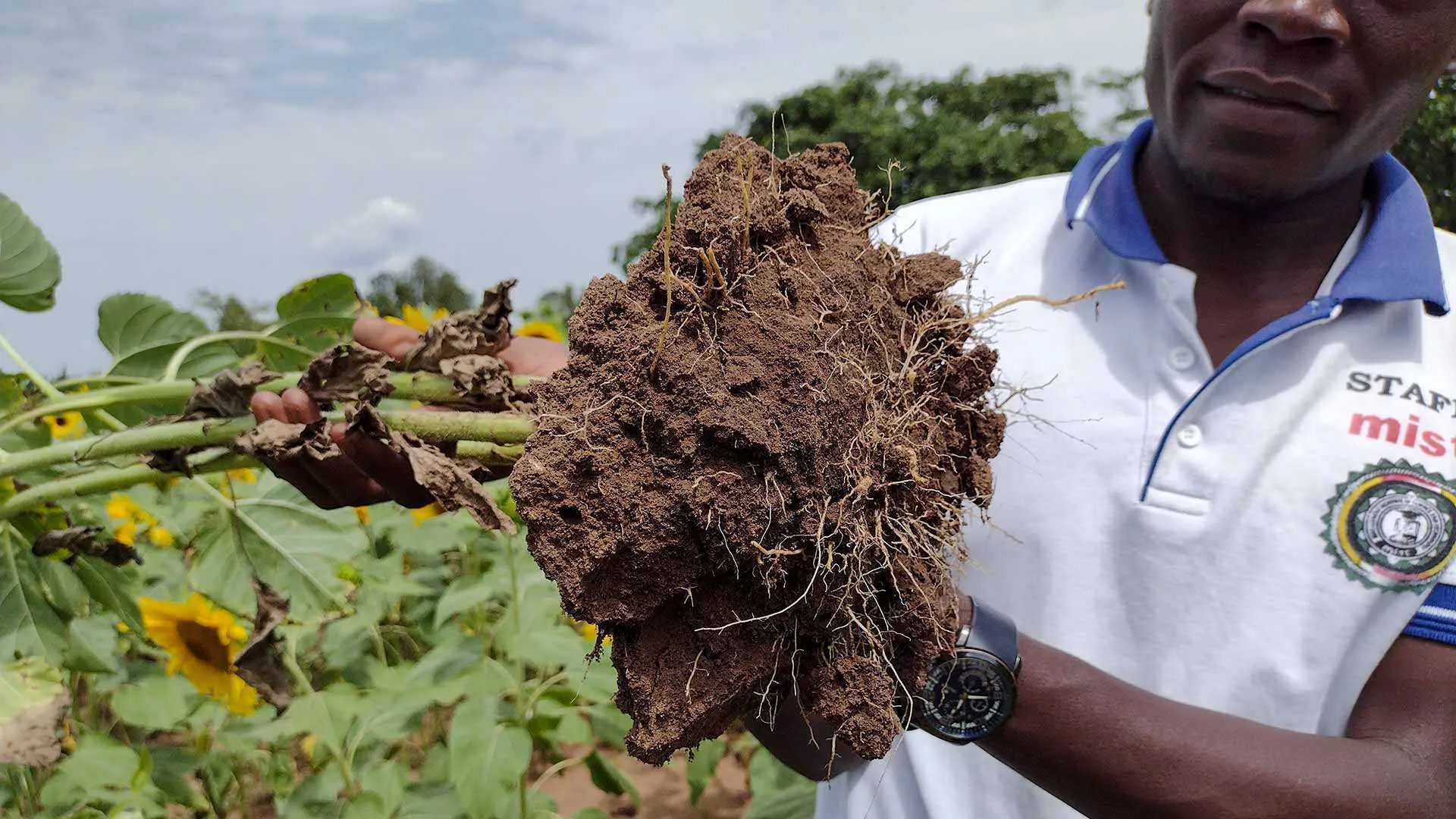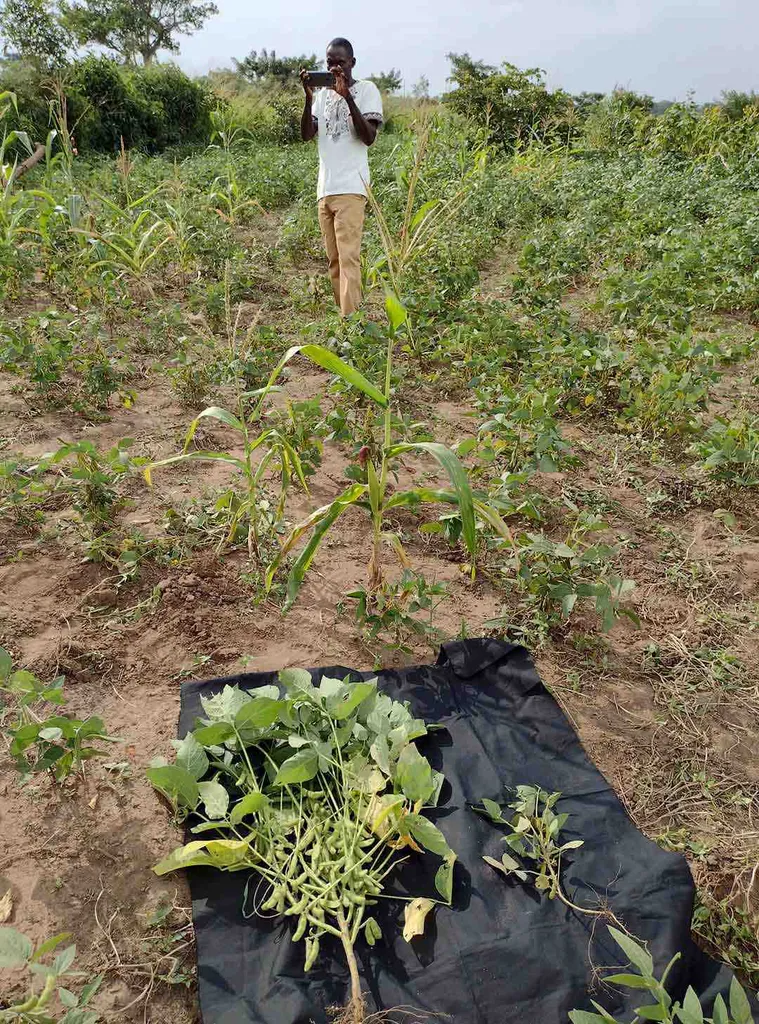- July 27, 2022
- By Kimbra Cutlip
A soil scientist who has shared his knowledge for decades with students in UMD classrooms recently returned from a trip to Uganda, where he gave science-based guidance for better yields to 120 small farmers looking to expand.
Ray Weil, a professor in the Department of Environmental Science and Technology, volunteered last month with the USAID-sponsored Farmer-to-Farmer program, which brings experts to developing nations to share their knowledge with farmers who lack the technologies available to farmers in developed nations and have little access to information on the most current best management practices.
“Sometimes it's a matter of a pair of outside eyes being able to help people ‘see the forest for the trees’ and diagnose ways to improve,” he said.
Hardly a novice to African agriculture, Weil has received two Fulbright Awards to support his work on the continent. Among his accomplishments, he developed SoilDoc, a portable “lab in a box” for on-farm soil analysis with support from the Kenya-based Alliance for a Green Revolution in Africa. Weil also co-wrote the leading textbook in the field of soil science, “The Nature and Properties of Soils.”
The main point of Weil’s most recent trip, sponsored by Catholic Relief Services in partnership with a local NGO named Global Forum for Development, was to consult with farmers in the East African nation who are trying to add cash crops like soybeans and sunflowers to their current subsistence-only crops.
Success with such crops could help farming families significantly improve cash flow, Weil said. “It is really gratifying when I can apply the basic soil science and agronomy principles that I teach in class every day to diagnose a problem in farmers’ fields and come up with practical solutions that will make their lives better.”
After observing local methods and testing soils, Ray found four areas where rural Ugandans could easily increase their yields.

Using a weeding hoe and ox-drawn plow compacts the soil, which keeps roots from growing sufficiently deep. Weil’s solution: Switch to equally simple and locally available tools like a “chisel” plow that doesn’t compact the soil.

Farmers cut and carry crops away from their fields for threshing and harvesting, depleting nutrients from the soil. Weil suggested they instead do those steps where crops grow, and also spread ash from cooking fires on fields for added nutrients. One farmer he met named Bible who already followed those practices showed Weil the lush mix of corn and soybeans that resulted.

Crop plants were spread too widely for their size in some fields, leaving bare soil to be dried and scorched by sunlight. Weil recommended increasing crop density by growing plants like this sunflower closer together so the sunlight hits plants rather than the ground.

Weil also noted that crops (soybeans, left) grown under a certain type of fig tree were thriving, while a few rows away (right), yields were dramatically lower. He tested the soil and found that trees were enriching it by adding organic matter and cycling nutrients like phosphorus. Weil encouraged the farmers to plant such “agroforestry” trees systematically in their fields for these benefits.
